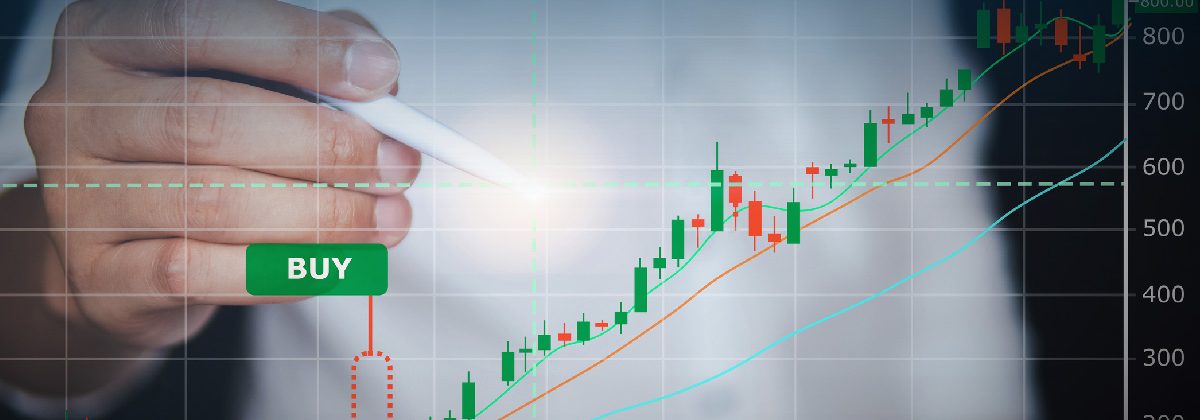Entry Strategies: Know When to Enter a Trade

“The goal of a successful trader is to make the best trades. Money is secondary,” says Dr. Alexander Elder, the founder of Financial Trading Inc. One of the ways to take satisfactory trading positions is to precisely time your entry with a strong strategy.
Let Technical Indicators Guide You
Knowing when to make a move and when to sit back requires discipline and some practice. While fundamental analysis helps you speculate on a market movement, technical analysis signals the trade entry and exit points. Use trading signals that take your risk appetite and financial goals into consideration.
Support and Resistance Level
Support and resistance levels work well in sideways markets. The price tends to bounce off the support (low) and resistance (high) levels.
A well-known technique is to open short positions at resistance and long positions at support. This works when fundamental analysis suggests a broader trend continuation, while the price fluctuates between the two levels.
Another strategy is to trade a breakout. Traders take long positions when the price breaks out of resistance, as bears fail to pull the price back into the range. The resistance becomes the support for the uptrend that follows. Conversely, traders take short positions when bulls fail to prevent the price from falling below support, which becomes the new resistance.
Bollinger Bands
Bollinger Bands are similar to the support and resistance trade entry strategy, and work well for upward or downward moving markets. This indicator packs in a lot of information. In this indicator, the lower and upper bands form a channel around the moving average of the price.
The upper band works as the resistance level for the ongoing trend, and the lower band works as support. High-frequency traders, such as scalpers, use Bollinger Bands to make the best of price fluctuations in an ongoing trend.
Short traders enter near the resistance level and exit near the support, while long traders enter near the lower band and exit close to the upper band.
Another popular entry strategy is to wait for a Bollinger squeeze, i.e., narrowing of the channels. Historically, a squeeze is followed by a significant price swing. You can choose to take long or short positions depending on your speculation regarding whether the asset price will break higher (long trade) or lower (short trade). Did you know trading forex, commodities or indices with CFDs is a popular way to explore opportunities in either direction? Here’s a beginner’s guide to CFD Trading.
Relative Strength Indicator
RSI helps traders identify whether the asset is oversold or overbought. RSI values range between 0 and 100, quantifying market momentum.
An RSI value of over 70 indicates that the asset is overbought at the current price surge. This means that the surge is not sustainable and may reverse. This is when traders tend to open short positions.
An RSI value below 30 is a sign of an oversold market. Popularly, traders open long positions, since bears may be unable to sustain the price decline.
Moving Averages
Using simple moving averages (SMA) or exponential moving averages (EMA) is another very popular entry strategy. Traders use a shorter (10-day) and a relatively longer (50-day) moving average of their choice. They determine entry points by crossovers between the shorter and the longer duration moving averages.
Consider a trader working with a 20-day EMA and a 50-day EMA. When the short-term EMA crosses over the long-term EMA from below, it is considered time to enter a long trade. On the other hand, when the 50-day EMA crosses over the 20-day EMA from below, traders tend to open short positions.
Beyond Reading Technical Signals
While trading signals mark common entry and exit points, you must ensure that other factors, such as position size, take profit level, etc., also align with your strategy.
Don’t chase the markets, let the trades come to you – this is commonly used by experts to emphasise that traders need a strong plan and a resilient psyche to survive in the long term. This also highlights that you must discover the trading opportunity within your trade set-up, constantly chasing markets to find one may be counterproductive. This is precisely why you put technical indicators into your trading plan, and not the other way around.
Technical indicators help you identify trading opportunities through signals. These are the triggers for you to place a trade. These could be when the price moves to a certain level, the RSI shifts from above 70 to below it, etc. Automating your trades with the help of Expert Advisors (EAs) is a popular way to time your positions.
The risk-reward ratio of a trade may be useful in sizing your positions. Evaluate the risk-to-reward ratio of the position. If it does not fall within your risk limits, stay put. Avoiding a bad trade is as important as making a good one.
Finally, determine the stop loss level. This is because protecting your capital is critical to having a satisfactory trading experience. As the Chairman of CAM Capital, Bruce Kovner, says, know when to get out before getting in. Placing limit orders, using stop loss, trailing stops, or take profit orders is an essential part of placing trades. These prevent loss accumulation in case the market moves against your speculation.
To Sum Up
- A strong entry strategy enables you to capture market opportunities as they arise.
- Technical indicators, such as RSI, Bollinger Bands, moving averages, etc., help traders identify entry points.
- Along with timing your entry, sizing your position, placing exits, and setting risk limits are critical to trading satisfactorily.
- Employing EAs to automate the execution of your trades can optimise your trading experience.
Disclaimer:
All data, information and materials are published and provided “as is” solely for informational purposes only, and is not intended nor should be considered, in any way, as investment advice, recommendations, and/or suggestions for performing any actions with financial instruments. The information and opinions presented do not take into account any particular individual’s investment objectives, financial situation or needs, and hence does not constitute as an advice or a recommendation with respect to any investment product. All investors should seek advice from certified financial advisors based on their unique situation before making any investment decisions in accordance to their personal risk appetite. Blackwell Global endeavours to ensure that the information provided is complete and correct, but make no representation as to the actuality, accuracy or completeness of the information. Information, data and opinions may change without notice and Blackwell Global is not obliged to update on the changes. The opinions and views expressed are solely those of the authors and analysts and do not necessarily represent that of Blackwell Global or its management, shareholders, and affiliates. Any projections or views of the market provided may not prove to be accurate. Past performance is not necessarily an indicative of future performance. Blackwell Global assumes no liability for any loss arising directly or indirectly from use of or reliance on such information here in contained. Reproduction of this information, in whole or in part, is not permitted.




